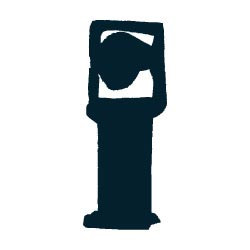Seymour Lipton For Older Children

Pioneer
Seymour Lipton
Subject: Anthopomorphic forms
Activity: Creat a sculpture using anthropomorphic forms
Materials: Aluminum foil, double-stick tape, scissors
Vocabulary: Anthropomorphic, biomorphic, abstraction, geometric abstraction, Monel metal, nickel-silver
Seymour Lipton began his professional life as a dentist and then became a sculptor. At first he was interested in carving wooden sculptures, but later he worked with metal. He sculpted using thin sheets of Monel metal that had a gleaming silvery appearance. He heated these sheets and shaped them into abstract forms. He also used nickel-silver, which is a hard silver-white metal that looks like a nickel.
The abstract forms Lipton created were sometimes anthropomorphic in that they resembled human forms. Seymour Lipton’s artistic style is biomorphic and geometric abstraction.
What materials did the artist use?
Which sculptures do you think look friendly? Threatening? Explain why.
What parts of the sculptures are anthropomorphic? Explain.
What do you think makes these sculptures both biomorphic and geometric?
This artist folded and cut thin sheets of metal to create these sculptures. Make your own sculpture by adhering several pieces of aluminum foil together using double-stick tape. The sheets should be bendable and have a nice weight. Then cut and fold the foil to make your own anthropomorphic sculpture.
Anthropomorphic - Having human characteristics (like legs, arms, or expressions) Biomorphic abstraction - Organic shapes taken from nature that are not realistic Geometric abstraction - Lines and shapes that are not realistic
Monel metal - A thin silver metal
Nickel-silver - A hard silver metal used to make nickels
